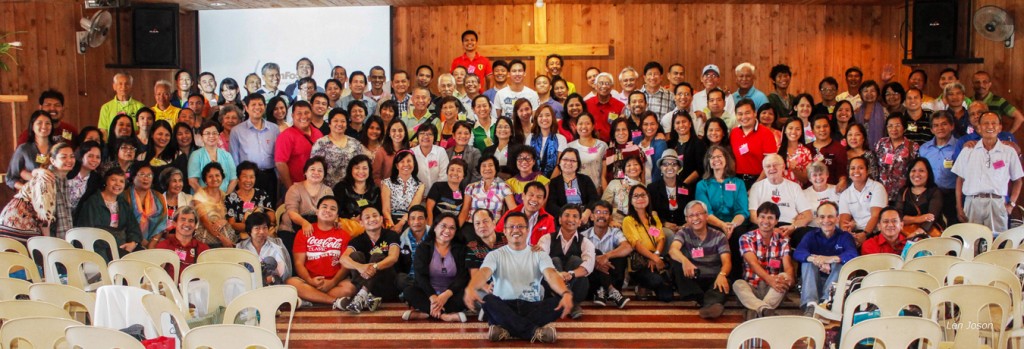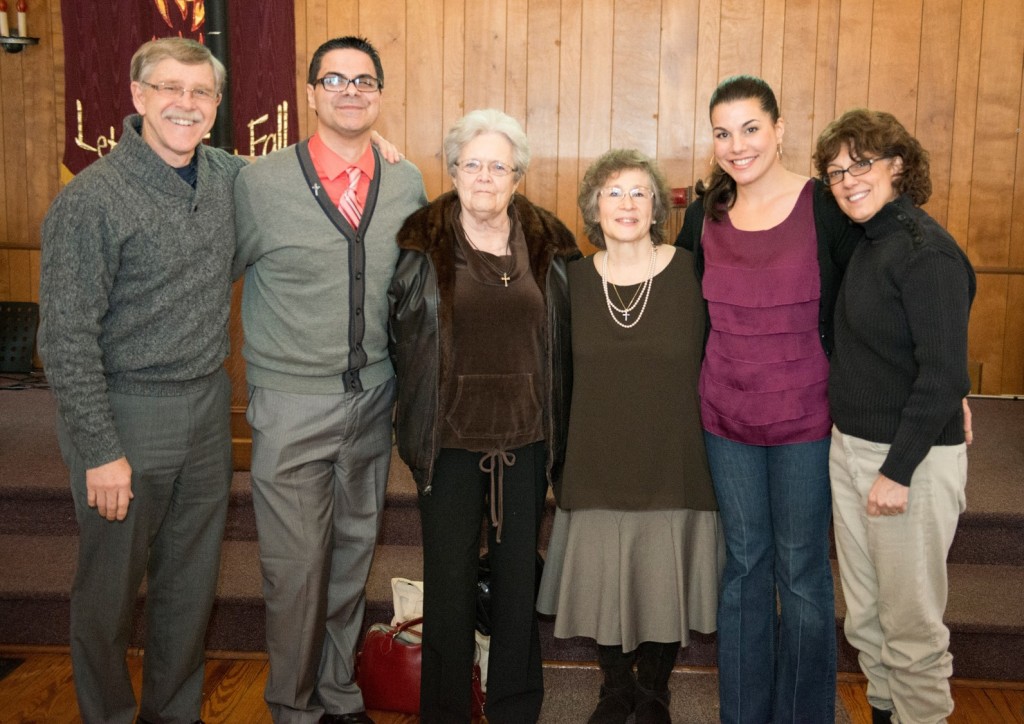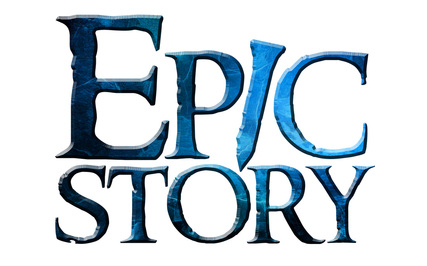GCI in the Philippines recently hosted Odyssey in Christ retreats in two locations. Here are links to reports:
Author: GCI Media
Journey with the Master
JWM in SoCal
The last issue of Weekly Update reported on a Journey with the Master (JWM) event held recently in Southern California. In the video update below, GCI-USA CAD director Greg Williams shares testimonies from teens and young adults who participated in that event.
Watch on YouTube at http://youtu.be/3n5Vs6c4XPs.
JWM in the Northwest
 Though it was football playoff time in Seahawk territory, several young adults from GCI’s Christian Family Fellowship church (in Kenmore, Washington) gathered on the weekend of January 16 for their fourth Journey with the Master retreat with GenMin national coordinator Anthony Mullins, and the congregation’s pastor Wayne Mitchell and his wife Patty. The group (pictured at right) embarked on a discussion about their own stories and the kind of stories they want to live in the future. Inspired by the book, A Million Miles in a Thousand Years: How I Learned to Live a Better Story by Donald Miller (author of Blue Like Jazz), the group talked about what makes an epic story and how our Creator is the ultimate author of our stories.
Though it was football playoff time in Seahawk territory, several young adults from GCI’s Christian Family Fellowship church (in Kenmore, Washington) gathered on the weekend of January 16 for their fourth Journey with the Master retreat with GenMin national coordinator Anthony Mullins, and the congregation’s pastor Wayne Mitchell and his wife Patty. The group (pictured at right) embarked on a discussion about their own stories and the kind of stories they want to live in the future. Inspired by the book, A Million Miles in a Thousand Years: How I Learned to Live a Better Story by Donald Miller (author of Blue Like Jazz), the group talked about what makes an epic story and how our Creator is the ultimate author of our stories.
The group was strengthened and encouraged by this opportunity to reflect both individually and collectively on their lives as servants. Though they are in the beginning phase of their lives, the next chapters are being written. The weekend was a great time to explore those stories, to reconnect, to take walks in or between downpours, to eat lots of food, to solve a small “coffee crisis,” to play games and to take communion together. Anthony good-naturedly joined the young adults in watching their beloved Seahawks in a playoff game against the Packers. It was a win/win weekend in the Pacific Northwest!
Mission trip to Colombia planned
 Janet Morrison and Ashley Ticas (pictured at right), recently visited GCI’s congregation in Barranquilla, Colombia (pastored by Sonia Orozco) to make plans for a short-term mission trip there in June 2015. The trip is being sponsored by Generations Ministries’ Great Commission Trips organization, which is directed by Janet. Ashley is the daughter of Heber Ticas, GCI Church Multiplication Ministries (CMM) national coordinator.
Janet Morrison and Ashley Ticas (pictured at right), recently visited GCI’s congregation in Barranquilla, Colombia (pastored by Sonia Orozco) to make plans for a short-term mission trip there in June 2015. The trip is being sponsored by Generations Ministries’ Great Commission Trips organization, which is directed by Janet. Ashley is the daughter of Heber Ticas, GCI Church Multiplication Ministries (CMM) national coordinator.
The focus of the mission trip in June will be to assist GCI’s Barranquilla congregation in conducting a Vacation Bible School (VBS) that will reach out with God’s love to churched and unchurched children (ages 5-11) along with their families.
Registration to participate in this trip (leaving from the U.S.) is now open. For information, click here.
Appreciating Christ’s sacrifice
Dear Brothers and Sisters in Christ,
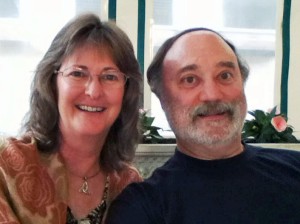 While reading a list of the 100 best novels written since 1900, I noted two by Vladimir Nabokov. Not being familiar with this author, I checked him out on Google (ah, the marvels of search engines!) and found that in addition to being a famous novelist, he is known for coining the term doughnut truth, which refers to truths with holes in them, making them less than the full truth. It struck me that some of the current explanations of Christ’s sacrifice are doughnut truths of a sort. Let me explain.
While reading a list of the 100 best novels written since 1900, I noted two by Vladimir Nabokov. Not being familiar with this author, I checked him out on Google (ah, the marvels of search engines!) and found that in addition to being a famous novelist, he is known for coining the term doughnut truth, which refers to truths with holes in them, making them less than the full truth. It struck me that some of the current explanations of Christ’s sacrifice are doughnut truths of a sort. Let me explain.
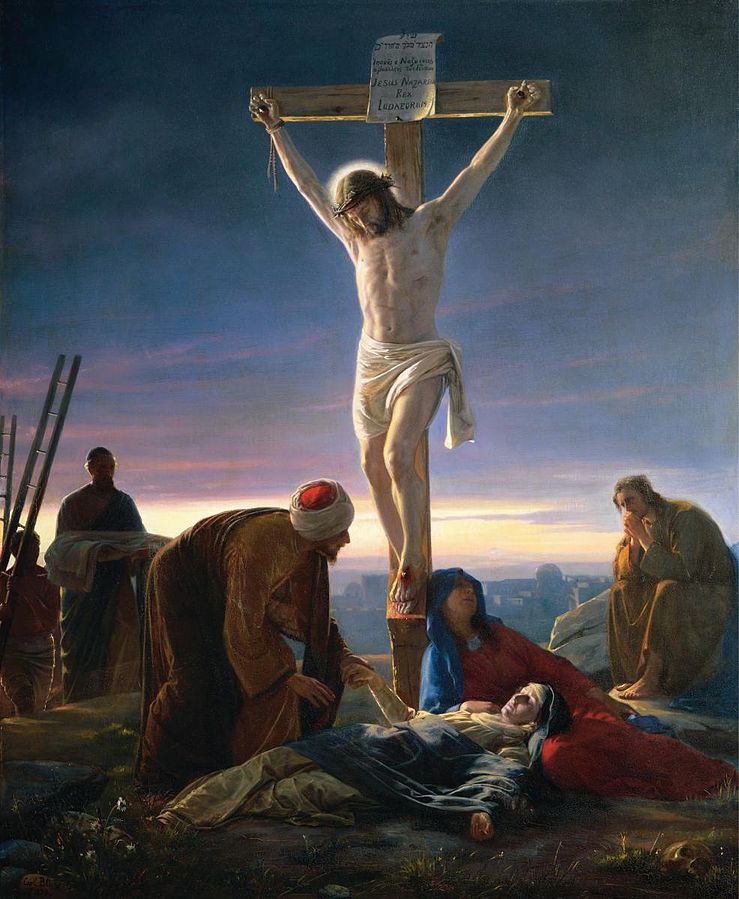
“Jesus died to appease the wrath of God brought about by your sins” is a message being thundered from many pulpits. The idea is that Jesus had to interpose himself between God and us and suffer in order to absorb all of God’s wrath towards sinful humanity. Many Christians accept this penal-substitution theory of the atonement (sometimes called the forensic theory) as the Bible’s primary teaching on the topic. Sadly, an overemphasis on this theory leaves the impression that Christ died not as a substitute for sinners, but as a substitute object for God’s punishment. The mistaken idea is that God the Father had to take his anger out on someone—as if inflicting pain and suffering on someone would itself make things right.
There are significant problems with this theory (model) of the atonement. One is that the Bible uses not one but several models to describe the riches of Christ’s atoning work on our behalf, including the sacrificial model, the economic model of exchange (redemption), the familial or filial model of family (reconciliation), the marital model (fidelity), and the healing model (peace, shalom). As Gustaf Aulen points out in Christus Victor, An Historical Study of the Three Main Types of the Idea of Atonement, the Bible also presents a Christ the victor (Christus victor) model of the atonement, which was the primary one taught by the early church fathers. According to this model, “The work of Christ is first and foremost a victory over the powers which hold mankind in bondage: sin, death and the devil” (Christus Victor, p. 20). Rather than going to the cross to appease God’s wrath, Christ did so to claim victory over the bondage of sin, the threat of death and the power of the devil, thus making all things subject to himself. Just as God delivered Israel from the bondage of oppression into liberty, so God delivers us from these terrible forms of oppression into true freedom in Christ.
Some theologians, such as Gregory Boyd and Scot McKnight, teach that the Christ the victor model should be seen as the Bible’s central model of atonement and the forensic model should be viewed as only one of several. Some theologians who support the centrality of the forensic model offer cautions about doing so. J.I. Packer warns that it should not be based singularly on human models of justice (which often is retaliatory or reciprocal) and should not be understood as an automatic explanation of how penal substitution really works. John Stott, in The Cross of Christ, lists multiple cautions about misrepresenting the nature of the atonement.
It certainly is true that Christ’s death paid the price, the cost, the debt and even the penalty of our sin. Jesus did rescue us from the consequences of our sin and experienced those consequences in order to overcome them and transform them on our behalf. But the penal substitution model of the atonement can be taken too far. Here are some common ways:
- Misrepresenting the Father as forcing the Son to do what he didn’t want to do—making the will of God divided and opposed between the Father and the Son.
- Misrepresenting the Son as manipulating, appeasing or cajoling the Father into changing his mind about condemning humanity—again, making the will of God divided.
- Characterizing the Father’s wrath as being pitted against the love of Christ. This mistake pits God against God as if the character and purpose of God are divided, at odds.
- Modeling the atonement after human models of retribution or vengeance, which are rooted in violence and tend to look more like child abuse than grace—as if human wrath “works the righteousness of God,” when it does not.
- Portraying the sinner as the object of God’s wrath instead of the sinner’s sin. This mistaken approach loses sight of the biblical truth that God’s aim is to separate the sinner from the sin, so that the sin can be done away with and the sinner redeemed.
- Viewing the Old Testament sacrifices as God pouring out his wrath on the animals used for sacrifice—sending them to “hell” on behalf of Israel. The truth is that the sacrificial animals were not being punished, but as unblemished creatures were sacrificially giving their lives so that there might be life in others where there was only death.
- Misrepresenting forgiveness as God making exceptions for sin in the lives of some. The truth is that God is implacably opposed to all sin everywhere, and through Christ made a way to condemn all sin, yet rescue sinners, giving them new, regenerated natures and making everything new.
- Portraying God as being absolutely separate from sinners. This misrepresentation flies in the face of God dwelling among Israel and the entire story of the Incarnation.
- Attributing to God a role that actually is Satan’s (whose name means “accuser”), thus making God out to be the accuser of humanity (because humanity is unholy and unworthy) and portraying God as desiring sinners’ condemnation rather than their repentance (the mistake made by Jonah!).
- Viewing grace as a secondary, separate and optional work of God after his primary and necessary work of judicial justice has been accomplished.
- Separating God’s justice from God’s love; his righteousness from his mercy and grace.
- Portraying God as more bound by his own rules of retributive justice (punishing the bad and rewarding the good) than by his restorative righteousness and desire for the reconciliation of his covenant love (where God’s righteousness aims to put things right).
- Placing an exclusive emphasis on sinners being saved from the penalty or consequences of sin, rather than on the sinner being saved from sin and being given a share in Christ’s renewed and glorified human nature. The truth is that we are saved from sin and for a right relationship of holy love with God as his beloved children.
- Overlooking the incarnation, the cross and the resurrection, and thus the truth that the Son of God became the new Adam—the new head of humanity—who came to reconcile the world to God on behalf of the Father and in the Holy Spirit, and not to condemn the world.
Faithful and accurate consideration of the atoning work of Christ will take into account the whole of the biblical story and teaching. When one aspect of that truth is singled out and developed in isolation, distortion inevitably results. But when we assemble all the pieces, giving all of them full weight while keeping Jesus at the center, we’re on the right track. That holistic approach keeps clearly in mind Christ’s relationship to the Father and the Spirit, and his relationship to us, and why he came. This is what the apostle Paul did in writing that God poured his love out lavishly upon us in Jesus Christ in order to condemn sin in his flesh so that we might have his new life and love in us by the Spirit (Ephesians 1:7-8; Romans 8:3-4). The author of Hebrews adds that Jesus Christ paid the price to bring this reconciliation about freely and gladly, united in heart, mind and will with the Father and the Holy Spirit (Hebrews 12:2; 9:14). The Bible teaches that Jesus’ atoning work was an act of the eternal, divine love of the Father, Son and Spirit.
We understand God and his lavish love for us through Jesus’ life and especially through his self-giving death. As T.F. Torrance notes in The Mediation of Christ, “the cross is a window opened into the very heart of God.” The cross reveals a God who is passionately in love with the world, not one who is furiously angry with it. Indeed, God so loved the world that he gave his Son. Yes, God hates sin, but he hates it because it hurts the world that he loves; it hurts his beloved creation. God does not pour out his wrath on the object of his love—Jesus or any of his other children. Jesus did not go to the cross to appease an angry God, but to show clearly the unconditional love of a Father, Son and Spirit whose greatest desire is to be in relationship with us. And that’s not doughnut truth—it’s whole, gospel truth!
Appreciating Christ’s sacrifice,
Joseph Tkach
Birth of Hendersons’ grandson
A.D.—Easter outreach
 Greg Williams, director of GCI-USA Church Administration and Development (CAD), recently attended a meeting of the National Association of Evangelicals (NAE) at which a preview was shown of the new 12-part television series entitled, A.D. – The Bible Continues. Executive producers of the series are Roma Downey and Mark Brunett.
Greg Williams, director of GCI-USA Church Administration and Development (CAD), recently attended a meeting of the National Association of Evangelicals (NAE) at which a preview was shown of the new 12-part television series entitled, A.D. – The Bible Continues. Executive producers of the series are Roma Downey and Mark Brunett.
The first segment of A.D. will be shown on NBC television on Easter Sunday, April 5 (go to www.nbc.com/ad-the-bible-continues for details, including a preview). The series then concludes on Father’s Day, June 21. Several churches are planning to invite the public for discussion groups during the 12-week run. Greg encourages GCI congregations to consider doing so.
Luann Patrickson
Here is an update from retired GCI-Canada pastor George Patrickson concerning his wife Luann, who is battling pancreatic cancer. For the previous update, click here.
Luann had a CT scan last week and the results are encouraging. The tumor has not grown any larger since first diagnosed and the tumor marker count had come down significantly. Thanks for all the love, prayers and cards of encouragement that have come our way. We appreciate so much the deep concern. We feel God’s presence and peace with us as we go through this journey.
Cards may be sent to:
George and Luann Patrickson 1936 Hyannis DriveNorth Vancouver, BC V7H 2E4
CANADA
Developments at Hands for Christ
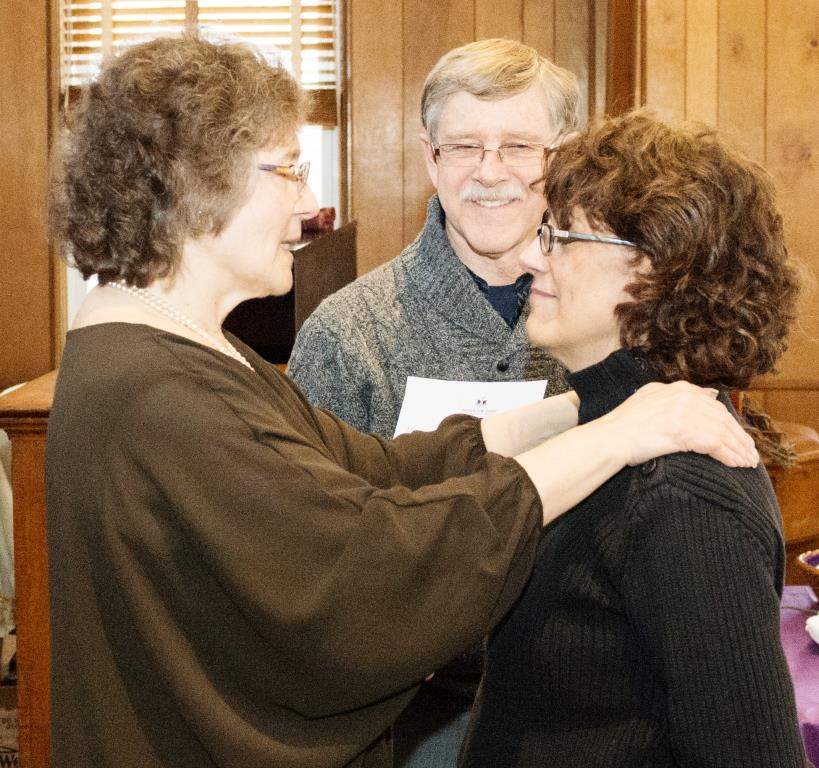
 Hands for Christ Community Church (HC3), is GCI’s newly planted church primarily for deaf people in Staten Island, New York. Under the leadership of church planter and lead pastor Mary Bacheller, the congregation continues on a pathway of growth and development.
Hands for Christ Community Church (HC3), is GCI’s newly planted church primarily for deaf people in Staten Island, New York. Under the leadership of church planter and lead pastor Mary Bacheller, the congregation continues on a pathway of growth and development.
Recently, Mary commissioned four new HC3 ministry leaders (see group picture below). Joyce Coletti (pictured above left, being commissioned by Mary with regional pastor Randy Bloom assisting), Louis D’Amico (pictured above right), and Marjorie D’Arrigo were all commissioned to serve in HC3’s communion ministry. Christina Trunzo-Mosleh was commissioned to serve in the voice interpreting ministry—HC3’s worship services are conducted in American Sign Language (ASL), with interpretation provided for the hearing.
GenMin camp curriculum published
Anthony Mullins, coordinator of GCI Generations Ministries (GenMin) announced recently that the 2015 standard curriculum for GenMin camps has been published. The curriculum, entitled Epic Story, will be used in most GenMin camps this summer. It can be adapted for use in GCI congregations, small groups and other ministries. To download the curriculum, click here.
Appreciating our baptism
Dear Brothers and Sisters in Christ,
We watch spellbound as the magician, wrapped in chains and secured by padlocks, is lowered into a tall tank of water. The top is then closed and the magician’s assistant stands on top, draping the tank with a shroud of cloth, which she lifts above her head. After only a moment or two, the shroud is dropped and to our surprise and delight, the magician stands on top of the tank with his assistant now inside, chains securing her. This sudden, mysterious “exchange” happens right before our eyes. We know it’s an illusion, but how the seemingly impossible was accomplished is not revealed so that this act of “magic” can be repeated to the surprise and delight of other audiences.
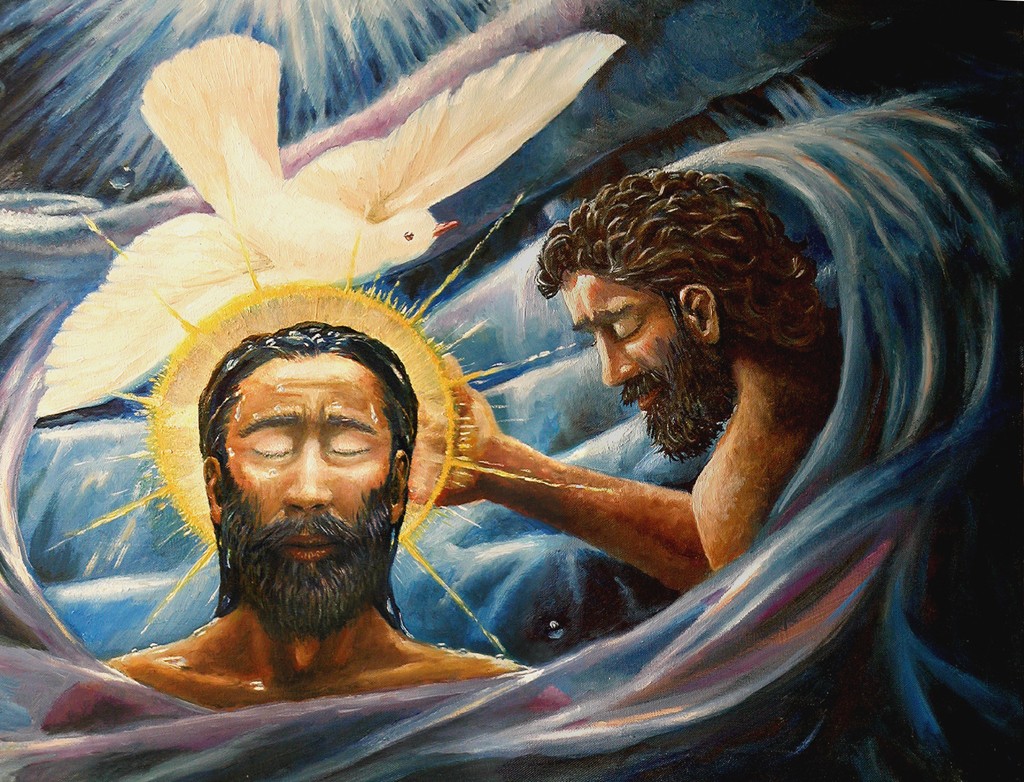
Some Christians view baptism as if it is an act of magic—at the moment one goes under the water, sins are washed away and the person is made new. But the biblical truth about baptism is far more exciting. It’s not the act of baptism itself that accomplishes salvation—Jesus does that as our representative and substitute. Nearly 2,000 years ago, he saved us through his life, death, resurrection and ascension.
It’s not in the act of baptism that we trade places with Jesus—exchanging our filth and sinfulness for his righteousness. Jesus doesn’t take on the sin of humanity each time a person is baptized. He did that once, for all, in his own baptism, life, death, resurrection and ascension. The glorious truth is that our baptism is a sharing, by the Spirit, in Jesus’ baptism! We are baptized because Jesus, our representative and substitute, was baptized for us. Our baptism is a sign and pointer to his. We put our trust in Jesus’ baptism, not our own.
It’s important to realize that salvation is not about what we do. As the apostle Paul wrote, it’s about Jesus—who he is and what he has done (and continues to do) on our behalf: “It is because of him that you are in Christ Jesus, who has become for us wisdom from God—that is, our righteousness, holiness and redemption. Therefore, as it is written: ‘Let the one who boasts boast in the Lord’” (1 Corinthians 1:30-31).
With Holy Week only a few weeks away, thoughts of celebrating my baptism have begun to stir. The baptism I have in mind is more than my own in the name of Christ many years ago—it’s the baptism with which Jesus himself was baptized as the representative (vicarious) man I wrote about last week.
In his vicarious humanity, Jesus is the last Adam. As a human being like us, he was born, lived, died and was resurrected with a glorified human body and ascended into heaven. When we are baptized, we join Jesus in his baptism—his baptism applied to us by the Holy Spirit. In other words, when we are baptized, we are baptized into Jesus.
This baptism is fully Trinitarian. When Jesus was baptized by his cousin John the Baptist (see the painting above), the Trinity was present: “As soon as Jesus was baptized, he went up out of the water. At that moment heaven was opened, and he saw the Spirit of God descending like a dove and alighting on him. And a voice from heaven said, ‘This is my Son, whom I love; with him I am well pleased’” (Matthew 3:16-17).
Jesus was baptized in his role as the one mediator between God and humanity. He was baptized on behalf of humanity, and our baptism signifies our participation in the full and vicarious humanity of the Son of God. Baptism has a basis in the hypostatic union through which God draws near to humanity and humanity draws near to God (hypostatic union is a theological term derived from the Greek word hypostasis, which describes the inseparable union of Christ’s divinity and humanity—making Jesus fully God and fully man at the same time). As Christ is fully divine and fully human, by his nature he draws God near to us, and us near to God. Here is how T.F. Torrance explained it:
For Jesus, baptism meant that he was consecrated as the Messiah, and that he, the Righteous One, became one with us, taking upon himself our unrighteousness, that his righteousness might become ours. For us, baptism means that we become one with him, sharing in his righteousness, and that we are sanctified in him as members of the messianic people of God, compacted together in one Body in Christ. There is one baptism and one Body through the one Spirit. Christ and his Church participate in the one baptism in different ways—Christ actively and vicariously as Redeemer, the Church passively and receptively as the redeemed Community.
When Christians think they are saved by the act of baptism, they are misunderstanding who Jesus is and what he has done as Messiah, mediator, reconciler and redeemer. I love the answer T.F. Torrance gave when asked when he was saved: “I was saved about 2,000 years ago in the death and resurrection of Jesus.” His answer articulates the truth that salvation is not in the experience of baptism but in the work of God in Christ through the Holy Spirit. When we talk about our salvation, we are transported back in time to the moment in salvation history that had little to do with us, and everything to do with Jesus. It was the moment when the kingdom of heaven was inaugurated and God’s original plan to elevate us was sparked in time and space.
Though I did not fully understand this four-dimensional reality concerning salvation when I was baptized, it is no less real, no less true. The sacraments of baptism and communion are about Jesus uniting himself to us and us to himself. These grace-filled expressions of worship are not about our timing, but about what occurred in God’s timing. So whether we were baptized by sprinkling, pouring or immersion, the reality is what Jesus did for us all in his atoning sacrifice.
In GCI, we follow Jesus’ example and typically baptize by full immersion. However, that is not always possible—most prisons, for example, do not allow baptism by immersion. Also, many infirmed people cannot be immersed, and it’s appropriate that infants be sprinkled. Some humorously refer to Jesus’ encounter with the thief on the cross as baptism by “dry cleaning.”
Let me wrap this up with another quote from T.F. Torrance:
All this helps to make it clear that while baptism is both the act of Christ and the act of the Church in his Name, it is to be understood finally not in terms of what the Church does but in terms of what God in Christ has done, does do and will do for us in his Spirit. Its meaning does not lie in the rite itself and its performance, nor in the attitude of the baptised and his obedience of faith—even the secondary reference of baptism, by its nature as a passive act, in which we receive baptism and do not administer it to ourselves, directs us to find its meaning in the living Christ who cannot be separated from his finished work and who makes himself present to us in the power of his own Reality (Theology in Reconciliation, p. 302).
As I look forward to Holy Week and the celebration of Jesus’ passionate sacrifice for us, I find myself thinking fondly of the day I was baptized by immersion and how much better and deeper I now appreciate Jesus’ act of obedient faith on our behalf. My hope is that a better understanding that your baptism is a real joining with Jesus in his baptism will be a cause for celebration as you head into the Easter season.
Appreciating our baptism,
Joseph Tkach


